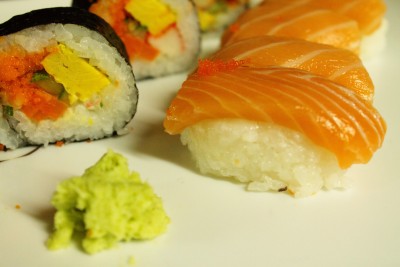Taxonomic Classification
Domain: Eukarya
Organisms in domain Eukarya have membrane-bound organelles
and a nucleus.
Kingdom: Plantae
The kingdom Plantae is defined by the association of
chlorophyll, which gives these organisms their green color.
It is extreme diverse, as it contains over 250,000 species
Phylum: Magnoliophyta
Members of the Magnoliophyta, also known as angiosperms, are
plants that produce flowers and have seeds that develope in an
ovary.
Class: Magnoliopsida
Also known as dicots, members of this class have two
cotyledons and have vascular tissue usually arranged in a
ring. The presence of a main root also indicates a dicot.
Order: Capparales
The plants of this order include the mustards, cabbages,
turnips, and radishes.
Family: Brassicaceae
The family Brassicaceae is rather large, with 350 genera
comprising about 3,000 species, nearly all of which are herbs.
Genus: Wasabia
The genus Wasabia is part of the family Brassicaceae, which
means it is closely related to cabbages, broccoli, and
cauiflower.
Species: Wasabia japonica
Wasabia japonica is the only species in the genus
Wasabia.
